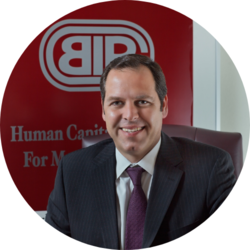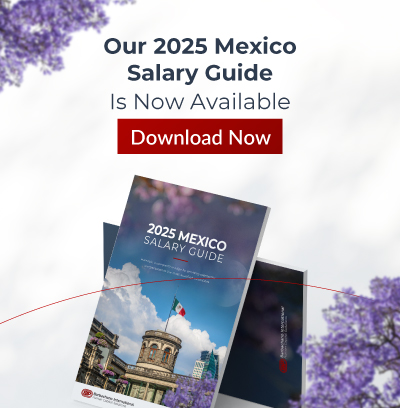
In today’s leadership market, where opportunity and mobility are high, companies aren’t just competing for talent. They’re competing for alignment. Executives are being more selective about where they go, not just based on compensation or title, but on whether a role speaks to their deeper goals, values, and working style. In a market that remains tight for high-performing, bilingual, and multicultural leadership, especially in the U.S. and Latin America, understanding what these leaders are really prioritizing in 2025 can mean the difference between winning or losing top talent.
At Barbachano International, we’ve seen this shift firsthand. Executives are no longer asking only about scope and responsibilities. They’re asking: “Will I be doing work that matters?” “Is this a place where I’ll be heard?” “Does the company care about people, or just results?” These questions are reshaping executive hiring conversations across industries.
Let’s take a closer look at what top performers are looking for and what your organization can do to meet them where they are.
Meaningful Work and a Sense of Purpose
Top executives want more than a job. They want their work to count for something. In McKinsey’s study on employee purpose, over 70 percent of employees said their sense of purpose is defined by their work. This figure is even higher among leaders, who often tie personal identity to professional impact.
That doesn’t mean every company needs to have a mission to change the world. But it does mean leaders want clarity. What is your company building toward? How does their potential role fit into that vision? If you can’t articulate why the work matters, beyond profitability, you risk losing candidates to firms that can.
Executives and senior management also want to lead change, not just manage tasks. When they see that their leadership will shape outcomes with real-world significance, they lean in. When they don’t, they walk.
Flexibility, Trust, and Leadership Autonomy
Having a big title isn’t enough anymore. Today’s top talent cares just as much about how they’ll be able to lead as where they’ll be working. They’re not looking for rigid rules or micromanagement. They want to know they’ll be trusted to lead in a way that fits their style and experience.
That doesn’t mean they’re avoiding responsibility. They’re looking for real ownership. They want the chance to make decisions, build the right team, and try new approaches without having to fight for every inch. Research consistently shows that when leaders are empowered to make decisions, they are more engaged, more effective, and more likely to stay committed to the organization.
At the end of the day, leaders want to work in a place where they feel trusted. They want CEOs who understand that there is more than one way to lead and who are willing to give them the space to do it well. They also want the flexibility to manage their time in a way that allows them to perform without burning out.
An Authentic Culture and Strong Employer Reputation
Culture has always mattered, but now it is in the spotlight. The rise of employer review platforms, public rankings, and transparent social media policies means leaders are evaluating you just as much as you’re evaluating them.
Executives want to know what it’s like to lead in your organization. Do ideas flow both ways? Are voices from diverse and multicultural backgrounds heard? Is there real collaboration at the senior level, or politics and power plays?
According to LinkedIn’s Global Talent Trends Report, 87 percent of professionals say company culture is one of their top considerations before joining a new role. And for leaders with a strong reputation already, joining a toxic or misaligned culture poses a personal brand risk.
Culture is not about perks or branding videos. It’s about values in action. Show your candidates how you support your people. Let them meet future peers, not just board members. Let them hear from internal voices, not just curated talking points.
Real Opportunities to Learn and Grow
The leaders you want to hire are thinking about more than just the role in front of them. They’re asking if this is a place where they’ll keep growing. That might mean learning from someone they admire, leading through a challenge they haven’t faced before, or stepping into work that pushes them in a good way.
For most executives, growth doesn’t come from a formal course or training session. It comes from being part of real decisions, working across teams, and having the space to stretch into something new. If they can picture that kind of future with your company, they’ll stay interested. If they can’t, they’ll likely move on.
What You Can Do Now
To attract top-tier leadership in 2025, companies need to think beyond compensation and into connection. Here’s where to start:
- Clarify and communicate the impact of the role. Show how the executive’s work will move the needle on something that matters.
- Empower leaders with autonomy. Trust their track record and give them the space to lead with their own voice.
- Invest in culture and show it, don’t just say it. Let your values show through actions, not slogans.
- Offer visible paths for continued growth. Make it clear how their leadership can evolve within your company.
Most importantly, listen. In the interview process, don’t just pitch the role, understand the person. What are they hoping to build? What’s missing in their current role? What kind of culture brings out their best? The more you understand what top performers want, the better positioned you are to become the company they choose.

By Fernando Ortiz-Barbachano
President & CEO of Barbachano International
Barbachano International (BIP) is the premier executive search and leadership advisory firm in the Americas with a focus on diversity & multicultural target markets. Since 1992, BIP and its affiliates have impacted the profitability of over 50% of Fortune 500 Companies. BIP has been recognized by Forbes as Americas’ Best Executive Search Firms and currently ranks #10 and #3 on the West Coast.

